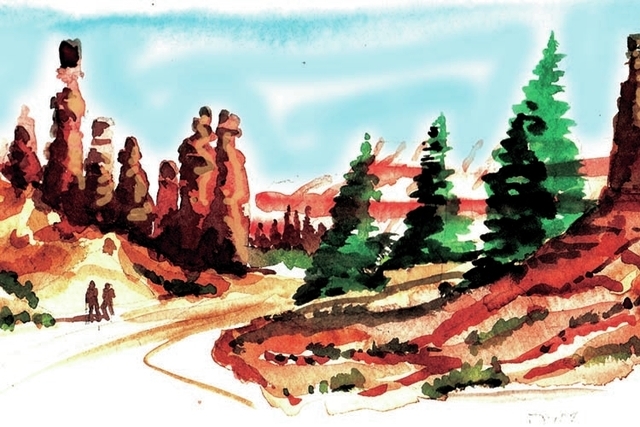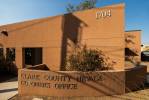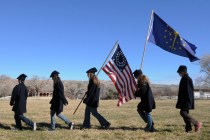Colorful Bryce Canyon packs huge scenic appeal

Bryce Canyon National Park in Southern Utah features deep, vividly colored amphitheaters at the eroded eastern edge of a high, forested plateau, each filled with weirdly carved formations, arches and canyons.
At 36,000 square acres, Bryce Canyon is smaller than many other Western national parks but contains enormous scenic appeal.
Bryce Canyon, about a five-hour drive from Las Vegas, is a popular destination for Southern Nevadans. There are several routes to the park, but they all begin by heading north on Interstate 15 into Utah.
The shortest route, at 270 miles, uses Utah Route 9 through Zion National Park to U.S. Highway 89. But park entrance fees apply, as well as escort fees for large recreational vehicles and trailers through narrow tunnels.
Many reach U.S. 89 using state Route 14 over Cedar Mountain or the Hurricane-to-Kanab route across the Arizona Strip. In winter, use state Route 20.
Follow U.S. 89 to Route 12, one of the most scenic byways in the United States. Drive through colorful Red Canyon to the Bryce Canyon National Park access road, state Route 63, at Ruby’s Inn. Drive south a few miles to reach the park entrance and facilities clustered near the rim at the north end of the park.
The entrance fee is $25, camping at either of the park’s two campgrounds costs $15 per night. The campgrounds fill up fast during the main visitation season, from May through October. Some sites can be reserved, but most are available on a first-come basis. Arrive early on weekdays for best site selection. The park is especially crowded on days when entrance fees are waived, such as Aug. 25 (the anniversary of the National Park Service), Sept. 27 (National Public Lands Day) and Nov. 11 (Veterans Day).
The park has a free shuttle system from late May through mid-September, which runs daily from 9 a.m. to 6 p.m. Visitors can catch the shuttle outside the park near Ruby’s Inn or inside the park at overflow parking areas. Wait times are short, and visitors can get on or off the shuttles at will. The system accesses points of interest and trailheads along the rim at the north end of the park.
There is a separate twice-daily bus along the scenic drive, a 17-mile route that explores the rim to the south. It accesses numerous viewpoints and trailheads into the park’s backcountry. Many prefer to use their own vehicles for this drive.
Start your park experience with a stop at the visitor center, where exhibits and a film provide an introduction to the park’s unique geological setting, plants, animals and history. The well-stocked bookstore is a popular place to browse.
Scheduled programs and hikes will be posted near the information desk. Check on the status of park alerts, such as the closure of one trail because of a landslide and the closure of several backcountry camping sites because of bear activity.
Popular programs include moonlight hikes during full moons and stargazing sessions during moonless nights. Bryce Canyon’s remote location and high altitude make it a premier location for night-sky observation. Programs and telescopes are available two or three times a week through October.
Many programs are held in the auditorium of the Bryce Canyon Lodge, which is also the place to find information on guided horseback trail rides. Now nearly 90 years old, the lodge is a rustic gem designed by Gilbert Stanley Underwood.
The only place to stay in the park if you are not camping, the lodge is open from April through mid-November. It offers food service and 114 rooms in the lodge, nearby cabins and two multistory motel-style buildings.
Make reservations online at www.foreverlodging.com or by calling 877-386-4383.
Other lodging options can be found along Route 12, including Ruby’s Inn, which has been welcoming guests since before Bryce Canyon became a park.
Margo Bartlett Pesek’s Trip of the Week column appears on Sundays.


















